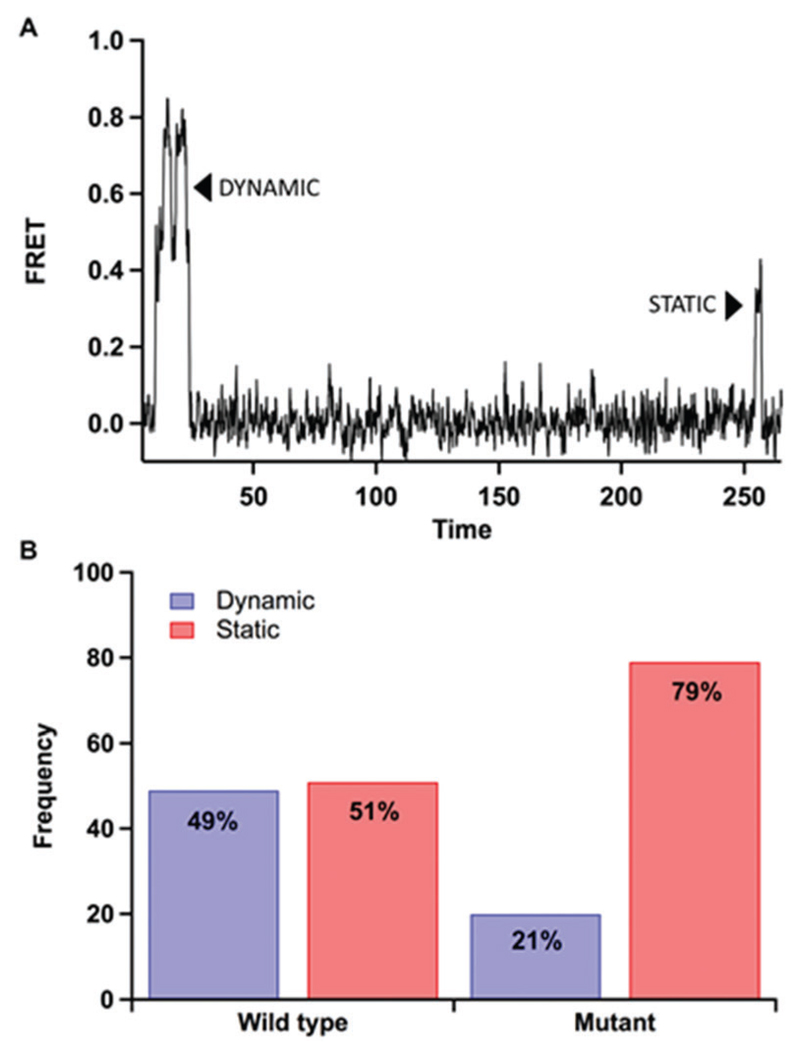Fig. 4.
Comparison of dynamic versus static binding events for wild type and Pol III core mutant containing a Y453A mutation in the thumb domain of the α-subunit using the method of maximum likelihood analysis for the G:AA double mismatch. Single-molecule experiments were performed in 20 mM Hepes, pH 7.6, 5 mM potassium glutamate, 3 mM magnesium acetate, 2 mM DTT, 2 mM Trolox, 25 nM enzyme and 10 μM dCTP. (A) Example of a dynamic event (left) that has distinct changes in FRET over the course of the binding event and a static event (right) that has one FRET state through the duration of the binding event. (B) Frequency of dynamic and static binding events for wild type (n = 100) and mutant (n = 96) DNA Pol III. Here, the wild type has a higher frequency of dynamic events (49%) than the mutant (21%) as shown in blue.

